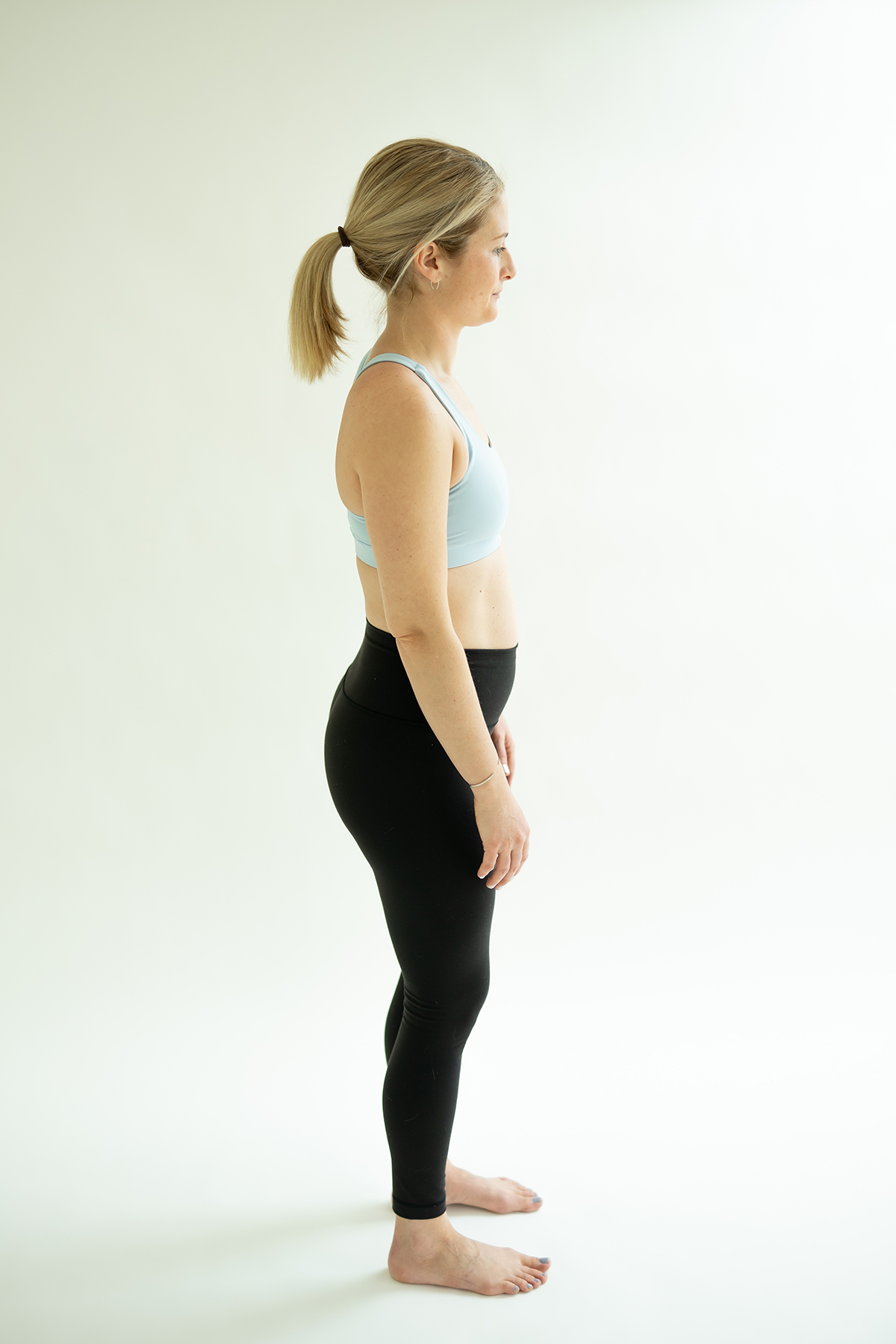I’m so excited to share a new series with you guys, all focused on healing and strengthening your body after having a baby. Alex Megan of After Baby Fit is a postpartum corrective exercise specialist and has made it her mission to help women rebuild their foundational strength and physical confidence after pregnancy and delivery. She offers a free consultation and quiz about your exercise readiness, along with a self paced 6 week postpartum recovery course. Follow on Instagram @aj.afterbabyfit. Stay tuned for more from Alex this month!
You plan and plan for the baby’s arrival and it can be hard to recognize the other person in the equation that is going to need a lot of support… you! Pregnancy is a time when you see the physical changes your body makes, and they are amazing. However, our body has found “new normals”, I’m sure you can picture classic pregnancy posture with a low back arch, slightly rounded shoulders, maybe legs locked out, sort of sitting into her hips? Yup, your body gets used to that. And it takes more than birthing a baby to snap back into good habits.
During labor the pelvic floor muscles stretch to extraordinary lengths, as if they haven’t given enough during the pregnancy! If any other muscle in your body was stretched like that you bet physical therapy or some sort of rehabilitation would be in order. But with the distraction of a new baby in the world, it’s easy to forget about your own healing and finding ways to rebuild your foundational strength that was altered.
What to Do Before Baby Arrives & Immediately After
We are outlining key changes to a woman’s body that occur during pregnancy and delivery, what you can do while pregnant to counteract them, helping your body recover faster, and steps to take postpartum to regain strength and control faster!
Breathing and connection with your deep core, pelvic floor & lower abdominals
This is a common and fundamental shift in the way your body operates. As the baby grows and takes up more space, women usually start to breathe into their upper chest and shoulders rather than using their diaphragm, core and pelvic floor. The ability to engage and use your deep core muscles gets more difficult. And it’s common to lose feeling in your lower abdominals without even realizing.
- Prenatal: Focus on breathing into your abdomen, expanding your belly and rib cage with a deep inhale and exhale. On the exhale, you should see the muscles in your abdomen contracting. Keep the hips stacked under the rib cage (in neutral spine) if possible. Imagine a rubber band pulling your hip bones and public bones together as you exhale, contracting the pelvic floor and lower abdominals as you push the breath up and out. Doing this on a ball or comfortable seated position may help!
- Postpartum: this is the first thing you can and should do to reconnect with your core. INHALE, expanding the belly and rib cage (not lifting your shoulders), feeling gentle pressure down on your pelvic floor.
EXHALE, starting with a kegel/lift of your pelvic floor, pulling the hip and pubic bones together with the imaginary rubber band and like a wave, pushing the breath up and out as you contract your deep core. This naturally strengthens your deep core muscles and pelvic floor just by BREATHING! These should feel like nice meditative, calming breaths, also needed postpartum!

Hips
Anterior Pelvic Tilt is the classic pregnancy posture, hips pour forward, creating an excessive arch in the low back. Adjusting this comes down to finding proper posture therefore alleviating some neck pain, low back aches and can help with leaking, creating the correct pressure control in the abdomen.
- Prenatal: while I believe it’s unrealistic to expect “perfect posture” while pregnant (I would have slapped someone telling me it was possible during the 3rd trimester!) you can focus on stacking your hips under your rib cage and easing that arch. Imagine pulling the pubic bone towards your breast bone rather than squeezing glutes to get your hips tucked.
- Postpartum: same rules apply but now it should be easier to pull your pubic bone towards your breast bone to stack your hips under your rib cage. Careful not to just squeeze the glutes!


Tight Mid Back & Frozen Shoulder Blades
Deep twisting is not an option when pregnant and your mid-back and shoulder blades tighten up as a result. This movement is SO important to reclaim.
- Prenatal: focus on pushing and pulling movements that force your shoulder blades to activate, such as rows. Keep the shoulder blades gliding and chest opening with stretching.
- Postpartum: focus on mid-back stretches and twists. Try reaching with your pinky to engage your serratus muscle (like abs for your back) and using all your back muscles for movement and posture. Upper back and neck will love some stretching as they tighten up from the holding and if you are breastfeeding. Try thread the needle stretching or look for breastfeeding stretch tutorials.
You deserve this mama. Let’s take a minute to help you plan your recovery, the same way you prepare to welcome home baby. It goes well beyond the hospital bag (but seriously, don’t forget the bottom spray – LIFESAVER!). It’s how you will heal your muscles and connect with them again to find “you” again after the baby arrives. While I will always recommend seeing a physical therapist or postpartum exercise specialist to help you through this transition, these suggestions will help encourage faster recovery and help you fully enjoy your time with baby.
*This article is an opinion given by a Postpartum Expert but is not considered medical advice. Always consult your doctor before beginning an exercise routine. A personal assessment of your specific needs is always advised.









You must be logged in to post a comment.